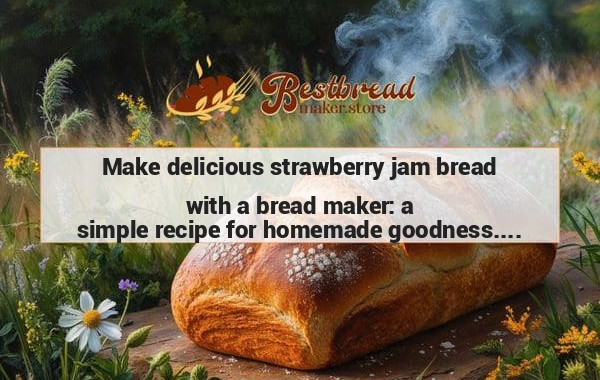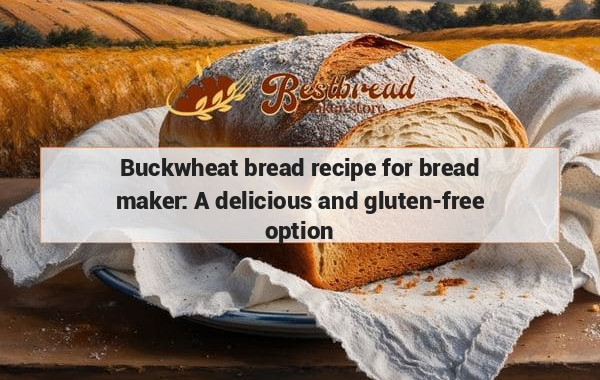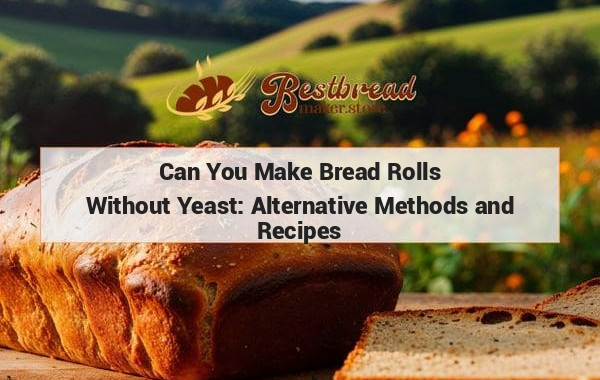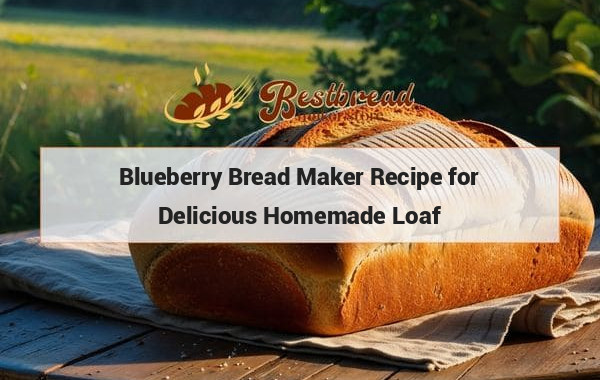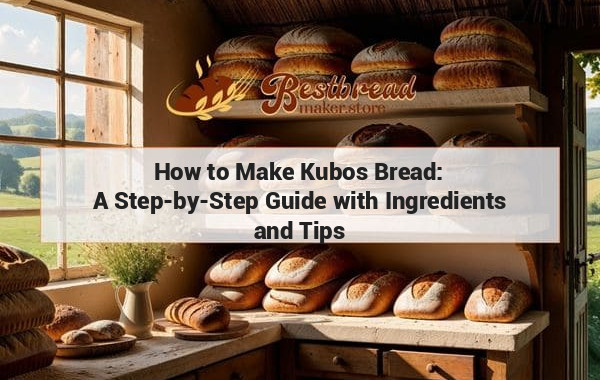How to Make Gluten Free Bread Flour: A Step-by-Step Guide
To make gluten free bread flour, you can combine different types of gluten free flours such as rice flour, almond flour, and tapioca flour. These flours can be mixed in specific ratios to mimic the texture and elasticity of traditional bread flour without the gluten. Experiment with different combinations until you find the perfect blend for your gluten free bread recipes.
Making gluten-free bread flour at home is not only a way to ensure control over ingredients, but it's also a game-changer for those with gluten sensitivities. With the right approach and the right machine, the process becomes seamless, resulting in delicious bread that is safe and enjoyable for everyone. Let’s dive into the process and all the key details you need to know about gluten-free bread flour and making it with a bread maker.
Key Takeaways
Gluten-free bread flour is made by combining different gluten-free grains like rice, sorghum, or almond flour, along with binders like xanthan gum. It’s essential to balance these ingredients to get the right texture and rise in bread.
What is Gluten-Free Bread Flour?
Gluten-free bread flour is a blend of gluten-free grains and starches that simulate the structure and texture of traditional bread flour. Since gluten is what gives bread its elasticity and chewy texture, creating a replacement that functions similarly requires a combination of flours and additional binders.
H3: Common Ingredients in Gluten-Free Bread Flour
Gluten-free bread flour typically consists of a mix of rice flour, sorghum flour, potato starch, and tapioca starch. These ingredients each bring different qualities to the table. For example, rice flour provides structure, sorghum adds flavor, and potato starch gives the dough some lightness.
H3: Importance of Binders in Gluten-Free Flour
In gluten-free baking, binders like xanthan gum or guar gum are crucial because they replace the elastic properties of gluten. Without them, gluten-free bread can turn out crumbly or too dense.
Making Gluten-Free Bread Flour at Home
Making your own gluten-free bread flour allows you to tailor the mix to your specific needs. The best part? You get to control the quality and freshness of the ingredients.
H3: Recipe for Homemade Gluten-Free Bread Flour
To make gluten-free bread flour at home, combine the following ingredients:
- 2 cups of white rice flour
- ¾ cup of potato starch
- ⅓ cup of tapioca starch
- 2 tsp of xanthan gum (or guar gum)
Mix thoroughly and store in an airtight container for up to three months. This mixture works beautifully for most bread recipes.
H3: Using the Bread Maker for Gluten-Free Bread
If you're using a bread maker, like those available at bestbreadmaker.store, it's important to follow the machine's specific settings for gluten-free bread. Gluten-free dough doesn’t need as much kneading, and often requires a longer rise time.
Key Considerations When Baking Gluten-Free Bread
When baking gluten-free bread, there are a few important things to keep in mind. Without gluten, the dough behaves differently and needs a different approach to ensure a good outcome.
H3: Hydration Levels
Gluten-free bread dough tends to be much wetter than traditional dough. Don’t be tempted to add extra flour if the dough seems too sticky—it’s meant to be that way.
H3: Baking Time
Because of the different hydration and flour composition, gluten-free bread often takes longer to bake. Keep an eye on your bread as it bakes, and if necessary, allow for a few extra minutes in the oven.
H3: The Role of Eggs in Gluten-Free Bread
Eggs play a significant role in gluten-free baking. They add moisture, structure, and help with rising. If you're making vegan gluten-free bread, you'll need a substitute, such as flaxseed eggs or aquafaba, to achieve similar results.
Best Practices for Making Gluten-Free Bread in a Bread Maker
A bread maker simplifies the process of baking gluten-free bread, but there are still a few best practices to follow to ensure success.
H3: Gluten-Free Setting
Most bread makers come with a special gluten-free setting, which adjusts the kneading and baking times accordingly. Be sure to select this setting when baking gluten-free bread.
H3: Letting the Dough Rise
Unlike traditional dough, gluten-free dough benefits from a longer rising time. Allow the dough to sit for about 30-40 minutes before starting the bread maker, which gives the starches time to absorb the liquid fully.
H3: Monitoring the Baking Process
While the bread maker handles most of the work, it's a good idea to check on your bread halfway through the process. If the top of the loaf starts to brown too quickly, you can cover it with foil to prevent burning.
Tips for Making the Best Gluten-Free Bread
Baking gluten-free bread can be a bit tricky at first, but with practice and a few tips, you'll be able to produce bakery-quality bread at home.
H3: Use Fresh Ingredients
One of the best things you can do for your bread is to use fresh, high-quality ingredients. Gluten-free flours, in particular, can go rancid quickly, so be sure to store them properly and check expiration dates.
H3: Experiment with Different Flours
Don’t be afraid to experiment with different gluten-free flours. For example, you can try using almond flour or buckwheat flour for a different texture and flavor.
H3: Add Moisture-Retaining Ingredients
Gluten-free bread tends to dry out more quickly than traditional bread, so it's helpful to add moisture-retaining ingredients like apple cider vinegar or psyllium husk to your recipe.
Frequently Asked Questions (FAQ)
Q1: Can I use a regular bread recipe for gluten-free bread?
No, gluten-free bread requires a different approach. Gluten-free dough needs more hydration, and it doesn’t benefit from the kneading process in the same way that traditional dough does. Be sure to follow a gluten-free recipe or use a bread maker with a gluten-free setting.
Q2: Why is my gluten-free bread so dense?
Gluten-free bread can sometimes be dense if there isn't enough binder (like xanthan gum) or if there’s too much flour in the mix. Ensuring the correct ratio of flours and starches is essential to avoid this issue.
Q3: Can I make gluten-free bread without a bread maker?
Yes, you can make gluten-free bread without a bread maker, but it requires more attention to detail. You'll need to manually handle the dough's rise and baking time, and make sure the dough is properly hydrated.
Q4: What’s the best flour mix for gluten-free bread?
A good flour mix for gluten-free bread typically includes a blend of rice flour, tapioca starch, and potato starch, with the addition of xanthan gum or guar gum for binding. You can experiment with adding other flours like sorghum or almond for extra flavor.
Q5: How do I store gluten-free bread?
Gluten-free bread doesn’t have the same shelf life as traditional bread. It’s best to store it in an airtight container at room temperature for up to two days, or in the fridge for up to a week. For longer storage, slice and freeze the bread.
In conclusion, crafting the perfect loaf of gluten-free bread flour takes a bit of practice and patience. However, with the right tools and ingredients, you can enjoy delicious, homemade bread that suits your dietary needs. Whether you’re using a bread maker from bestbreadmaker.store or making it by hand, gluten-free baking is a rewarding and delicious endeavor.



